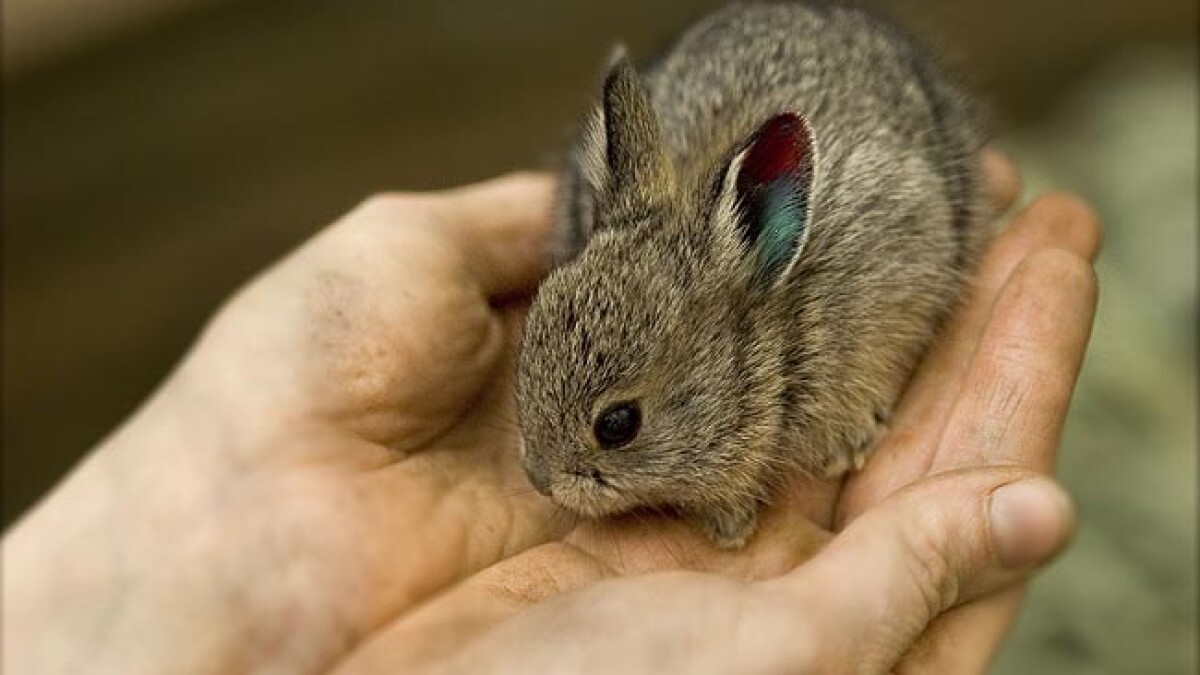
Did you know the pygmy rabbit is the smallest rabbit species in North America? These tiny creatures, weighing less than a pound, are native to the sagebrush habitats of the western United States. Unlike their larger cousins, pygmy rabbits dig their own burrows, providing them with shelter and protection. Their diet mainly consists of sagebrush, which makes up about 99% of their winter food intake. Sadly, these little hoppers are considered a threatened species due to habitat loss and fragmentation. Conservation efforts are underway to protect their unique ecosystem and ensure their survival. Ready to learn more about these fascinating critters? Let's hop into 33 amazing facts about pygmy rabbits!
Tiny But Mighty: The Pygmy Rabbit
The pygmy rabbit, one of the smallest rabbit species, is full of fascinating traits and behaviors. Let's dive into some intriguing facts about these petite creatures.
-
Smallest Rabbit Species: Pygmy rabbits are the tiniest rabbits in North America, weighing just 0.8 to 1.3 pounds.
-
Short Ears: Unlike other rabbits, pygmy rabbits have shorter ears, which help them conserve body heat in cold environments.
-
Distinctive Fur: Their fur is usually grayish-brown, providing excellent camouflage in their natural habitat.
-
Tiny Feet: Their small feet are adapted for digging, not for hopping long distances like other rabbits.
-
Burrowing Experts: Pygmy rabbits are one of the few rabbit species that dig their own burrows.
Habitat and Distribution
Understanding where pygmy rabbits live and how they adapt to their environment is crucial for their conservation.
-
Native to North America: They are primarily found in the Great Basin region of the United States.
-
Sagebrush Dependence: Pygmy rabbits rely heavily on sagebrush for food and shelter.
-
Habitat Loss: Urban development and agriculture have significantly reduced their natural habitat.
-
Protected Areas: Some regions have established protected areas to help conserve their populations.
-
Climate Sensitivity: Changes in climate can affect their habitat, making conservation efforts even more critical.
Diet and Feeding Habits
Pygmy rabbits have unique dietary needs that set them apart from other rabbit species.
-
Herbivores: They primarily eat sagebrush, which makes up about 99% of their winter diet.
-
Seasonal Diet: In summer, they diversify their diet with grasses and other green plants.
-
Water Intake: They get most of their water from the food they eat, rarely drinking from open water sources.
-
Digestive System: Their digestive system is specially adapted to break down tough plant materials.
-
Nighttime Feeding: Pygmy rabbits are crepuscular, meaning they are most active during dawn and dusk.
Reproduction and Lifespan
The reproductive habits of pygmy rabbits are as unique as their other traits.
-
Breeding Season: Their breeding season typically runs from February to July.
-
Litter Size: Females usually give birth to 3-6 kits per litter.
-
Short Gestation: The gestation period is about 27-30 days.
-
Early Independence: Kits are weaned and independent by the time they are 4-5 weeks old.
-
Lifespan: In the wild, pygmy rabbits live for about 3-5 years.
Behavior and Social Structure
Pygmy rabbits exhibit interesting behaviors that help them survive in the wild.
-
Solitary Creatures: They are generally solitary, except during the breeding season.
-
Territorial: Pygmy rabbits are territorial and will defend their burrows from intruders.
-
Communication: They use a variety of vocalizations and body language to communicate.
-
Predator Evasion: Their small size and burrowing habits help them evade predators.
-
Winter Adaptations: They remain active during winter, using their burrows to stay warm.
Conservation Status
Pygmy rabbits face numerous threats that have put them at risk.
-
Endangered Status: Some populations, like the Columbia Basin pygmy rabbit, are listed as endangered.
-
Conservation Programs: Various programs aim to breed and reintroduce them into the wild.
-
Genetic Diversity: Maintaining genetic diversity is crucial for their long-term survival.
-
Public Awareness: Raising public awareness about their plight is essential for conservation efforts.
-
Research Initiatives: Ongoing research helps understand their needs and how to protect them better.
Fun and Lesser-Known Facts
Here are some quirky and lesser-known facts about pygmy rabbits that might surprise you.
-
Tiny Teeth: Their teeth grow continuously and must be worn down by constant chewing.
-
Nocturnal Eyesight: They have excellent night vision, aiding their crepuscular lifestyle.
-
Silent Movers: Pygmy rabbits move quietly to avoid attracting predators' attention.
Final Thoughts on Pygmy Rabbits
Pygmy rabbits are fascinating creatures with unique traits. These tiny mammals, weighing less than a pound, are the smallest rabbits in North America. They thrive in dense sagebrush habitats, using their strong digging skills to create intricate burrows. Despite their small size, pygmy rabbits play a big role in their ecosystem, providing food for predators and helping to maintain plant diversity.
Unfortunately, habitat loss and other threats have put pygmy rabbits at risk. Conservation efforts are crucial to ensure their survival. By understanding more about these rabbits, we can appreciate their importance and support measures to protect them.
Next time you see a sagebrush field, remember the tiny rabbits that might be living there. Their survival depends on our awareness and actions. Let's do our part to keep these remarkable animals thriving for future generations.
Was this page helpful?
Our commitment to delivering trustworthy and engaging content is at the heart of what we do. Each fact on our site is contributed by real users like you, bringing a wealth of diverse insights and information. To ensure the highest standards of accuracy and reliability, our dedicated editors meticulously review each submission. This process guarantees that the facts we share are not only fascinating but also credible. Trust in our commitment to quality and authenticity as you explore and learn with us.
